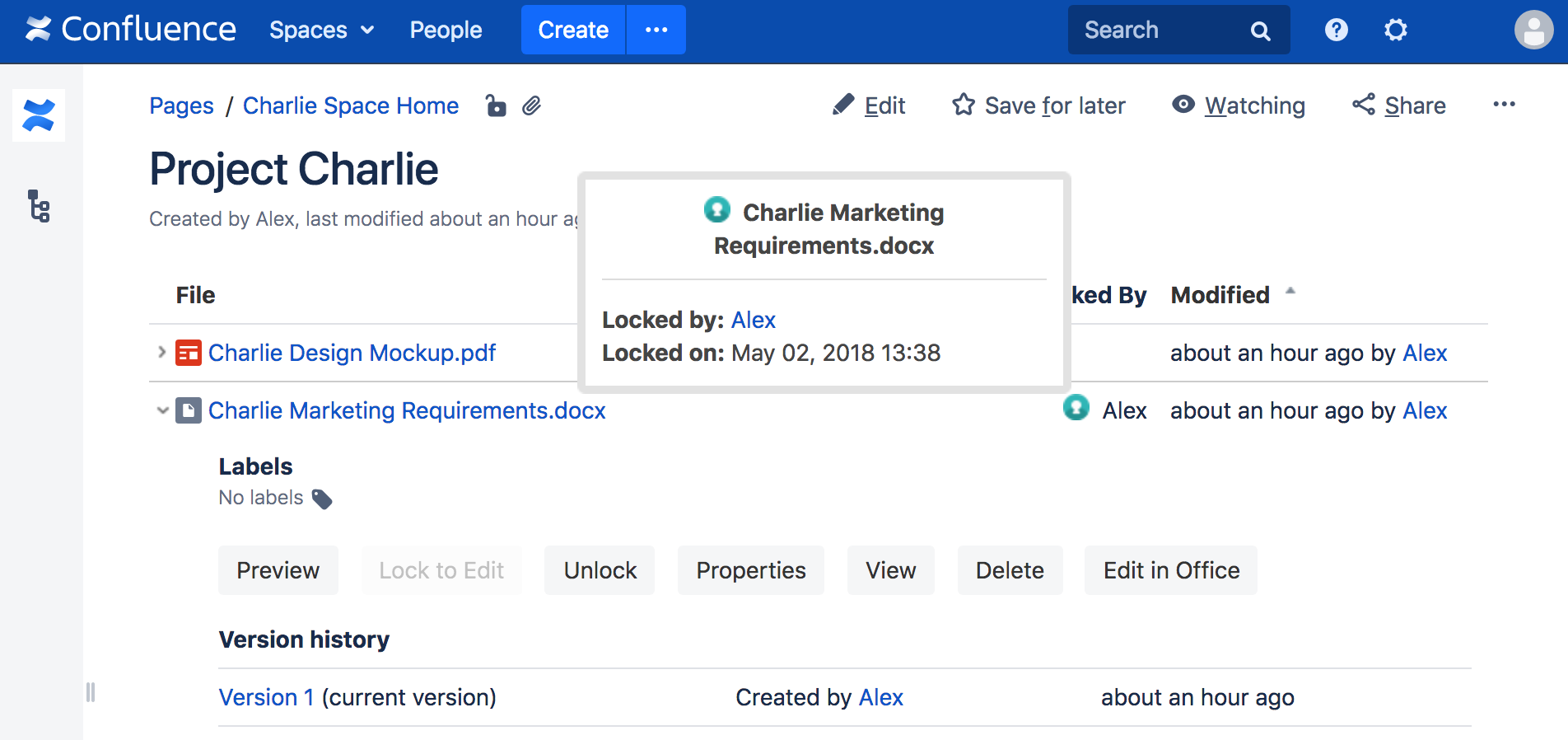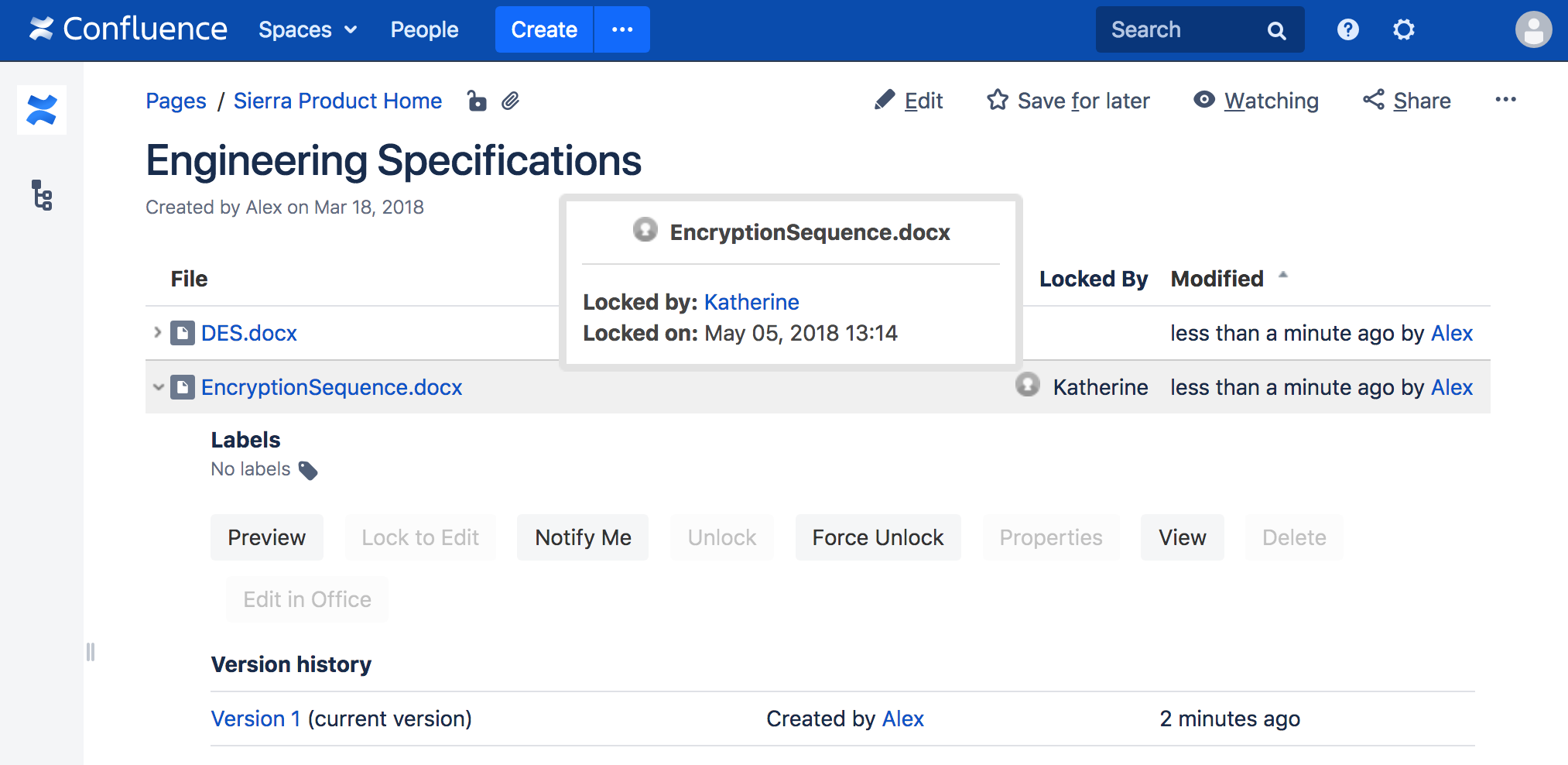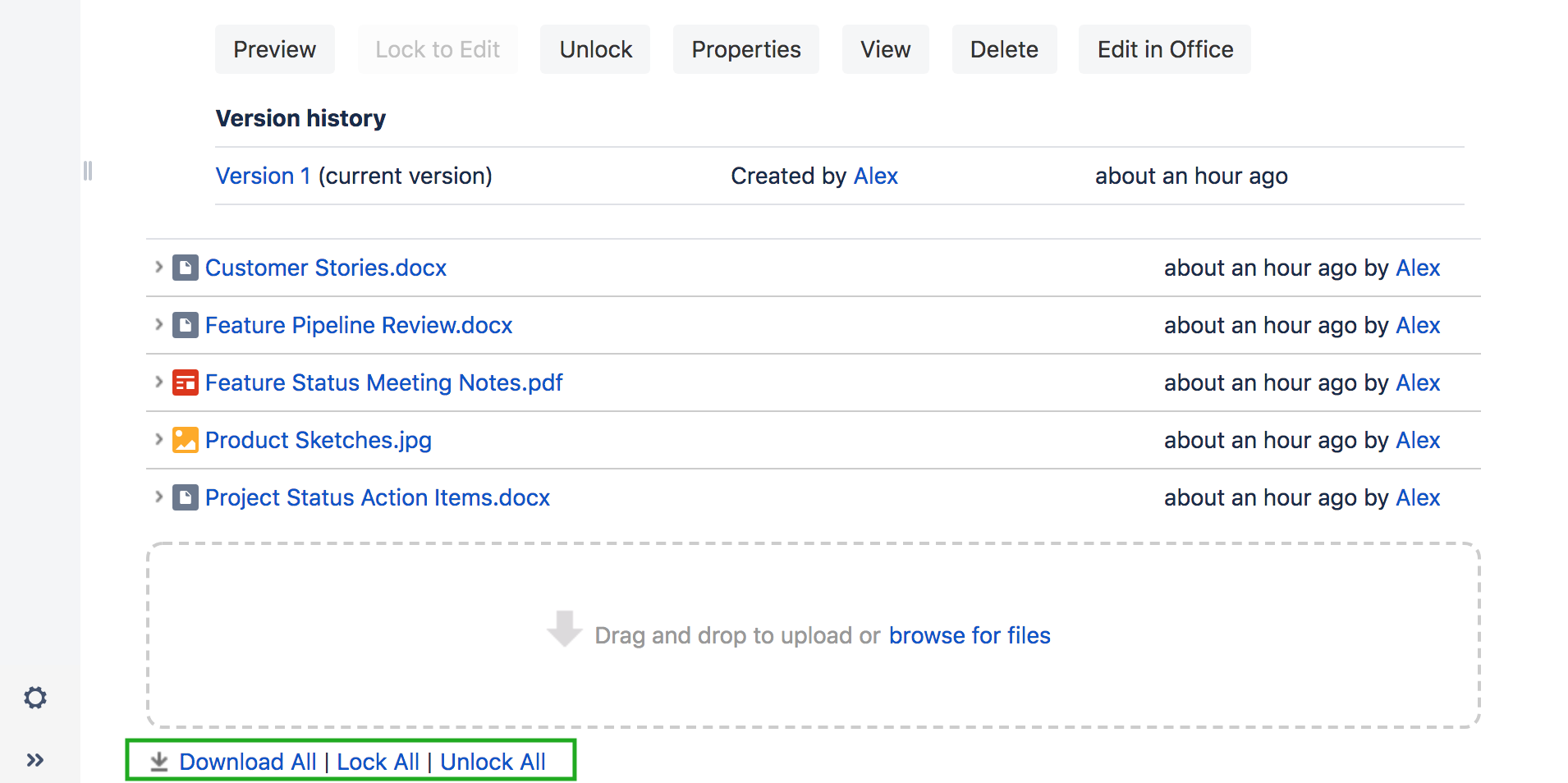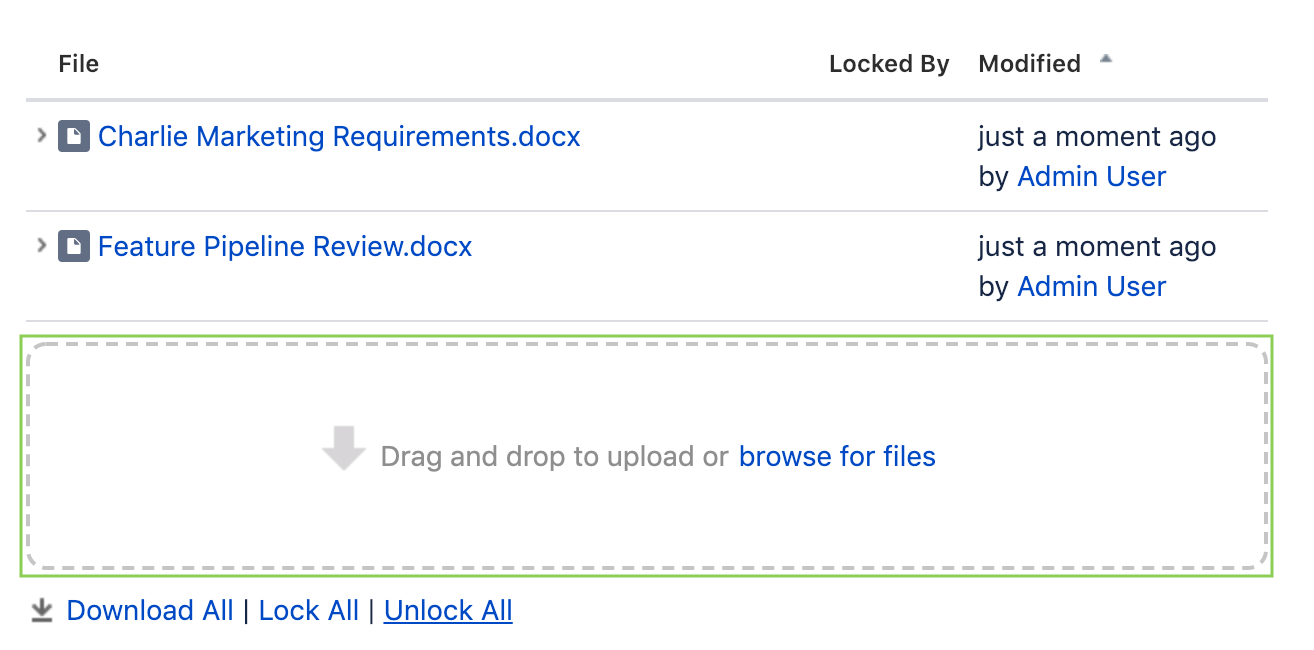Manually Locking and Unlocking Attachments
Manual Locking of Individual Attachments
When viewing a page containing the Attachments macro, Confluence will display Lock to Edit and Unlock buttons after clicking to expand an attachment. Additionally, Lockpoint will display corresponding links next to attachments on the Tools » Attachments page.
After clicking Lock to Edit, the document is protected. A user can edit or modify the attachment properties and then upload a new version of the attachment back into Confluence through drag-and-drop, the editor, or anywhere else that attachments can be modified. The green Lockpoint icon will also appear next to the attachment, and the user can hover the mouse over the lock icon in order to see more information about the lock. When the user is finished, the Unlock button makes the document available again for other users.
Note that the attachment Properties button is only available while the attachment is locked. To edit an attachment's properties while using Lockpoint (such as to change the name, description, or move it to another page), click the Lock to Edit button, click Properties, and then Unlock when done.
If an attachment is locked by another user, or if an attachment is not locked at all, the user will be unable to upload a new version of that attachment or edit the properties. Users who have Lockpoint Administrator privileges in a space will be able to unlock attachments that are locked by other users. Additionally, Lockpoint Administrators will see a Force Unlock button.
For already-locked attachments, Confluence will display a lock icon next to the filename. The current user's locks are shown with a stylized green lock icon, while files locked by any other user are shown with a gray lock icon. If the user places the mouse pointer over a lock icon, Lockpoint will display a tooltip containing the name of the attachment, the name of the user who owns the lock, and the date that the file was locked. The user can also click on the name of the attachment owner to send an email to him or her.
For information on editing Gliffy diagrams with Lockpoint, see the section on Working with Gliffy Diagrams.
Bulk Locking and Unlocking of All Attachments
Lockpoint also permits you to mass lock or unlock all attachments listed in an Attachments macro. From the Attachments macro, simply click the Lock All or Unlock All links at the bottom of the macro. Clicking Lock All will lock all attachments that are not already locked by you (and which are not locked by other users).
Similarly, clicking Unlock All will unlock all attachments in the macro that are locked by the current user. To unlock an attachment that is currently locked by another user, you must have Lockpoint Administrator privileges, and you muse use the Force Unlock button on each file individually, or else go to Space Tools » Cenote Lockpoint » Locked Files to unlock multiple attachments at the same time.
The locking and unlocking performed by Lock All and Unlock All is constrained to the list of files shown in the relevant Attachments macro. For example, if a macro is configured to display only those files that have a specific label, only those files will be locked or unlocked.
Updating Attachments Using Drag and Drop
Attachments can be uploaded (or modified) through Confluence's drag-and-drop functionality. Lockpoint automatically protects all attachments that would be modified using drag-and-drop.
The Attachments macro has a drag-and-drop zone, as does the Attachments page, the Confluence Editor, and more. To update an attachment using drag-and-drop, simply drag the file to the container, just as in the case where Lockpoint is not installed.
If the user tries to drag-and-drop an unlocked attachment that already exists on the page (and Smart Locking is disabled), or if the user tries to update an attachment that is already locked by another user, the user will receive an appropriate error message.
To update an attachment that already exists on the page, click Lock to Edit, drag-and-drop the attachment, and click Unlock. Alternatively, to avoid these extra lock and unlock steps, ask your Confluence administrator to enable Smart Locking.
The drag-and-drop container is available in the following locations:
- Page » Tools » Attachments
- the Attachments macro
- the Confluence Editor, using the Image button or the + » Insert Attachment and + » Insert Image features
Due to a bug in Confluence (CONFSERVER-21709), if a user is in the editor and attempts to upload a file already locked by someone else, the user may receive an irrelevant download prompt rather than a user-readable error message. This occurs primarily (although not exclusively) when using Internet Explorer. This is only a user interface issue and the old attachment will be properly preserved.




